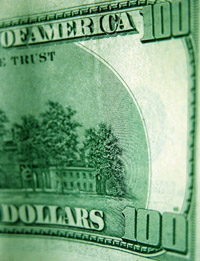Numbers give apocalyptic forecast to financial situation in USA
Continued. You can read the Part I of the article here

The Second Quintile
The working poor families are those families that earn $34000 per year. According to a 2005 report by the Urban Institute, over 13 million families including 26.5 million children are living at the edge of the poverty (median income = $38000). According to this study “many children today are growing up in families with low incomes and with a parent working a substantial amount. The picture we have drawn here is one of low-income families with relatively high work effort at low wages, with jobs that often do not provide basic benefits, and with expenses roughly in line with their incomes. A subset of these families is experiencing material hardships related to food, housing, and health care, and many children in these families are not doing well on a range of measures. The economic circumstances of low-income families in part reflect their lower levels of educational attainment and poorer health (which could itself be a consequence of economic circumstances) than those families on the next rung up the economic ladder”.
Any increases in taxes or reduction in services will push (in reality) most of these people into the first quintile.
The Middle and Fourth Quintile
There is no agreed upon definition of Middle Class. Some such as Washington post consider those that earn from $40000 to $90000 to belong to the middle class, while others consider any family that have an income of $20000 to $90000 as middle class. Here since we use the Congressional Budget Office’s quintile system, we combine the middle and fourth quintile to define our middle class group. Then according to this classification a middle class family is a family whose income is between $51900 and $77300 per year.
The middle class is considered the backbone of the consumer society. Their health and wealth is extremely important to the economy. They tend to be better educated than the lower quintiles, healthier and more politically engaged. Their size and economic health determines the prosperity of the nation.
When one looks at the income of a middle class family one would expect that at least this group would be in a good financial position. But all the reports point to the contrary.
The middle class is squeezed from all sides. The costs of housing, healthcare, transportation and education for the kids, have skyrocketed; making it exceedingly difficult to make ends meet.
According to the Department of Housing and Urban Development (HUD), "affordable housing" should cost less than 30% of a family's income, either in rent or a monthly mortgage. Yet many middle class families have to pay much more of their disposable income for housing. “From the end of 1994 to the end of 2004, housing prices rose 46 percent faster than overall inflation. In the period of a weak labor market, from March 2001 through the end of 2004, housing prices outpaced overall inflation by 25 percent”. Many people own only the home that they live in. The rising house prices don’t really help these people, except in allowing them to re-mortgage their homes to raise extra loans; which eventually they have to pay back. If they sell their homes and move to a cheaper neighborhood, they can earn a good profit, but almost no-one does that. So if majority of the middle class only own the homes that they live in, the rising house prices do not really help them. On the contrary it creates the illusion of wealth, encouraging these people to borrow more and spend more. Eventually these loans have to be paid back, and when that time comes, most people find it hard to manage.
Do the middle class families face more hardship now that they did before? According to Harvard Law School Professor Elizabeth Warren they do. According to her “moreand more families today are sending both parents into the workforce – it has become the norm, it is what we now expect. The overwhelming majority of us do it because we think it will make our families more secure. But that's not how things have worked out. By the end of this decade, one in seven families with children will go bankrupt. Having a child is now the single best predictor of bankruptcy, and this holds true even for families with two incomes.
So we looked at the data for two-income families today earning an average income. What we found was that, while those families certainly make more money than a one-income family did a generation ago, by the time they pay for the basics -- an average home, a health insurance policy, a second car to get Mom to work, child care, and taxes -- that family actually has less money left over at the end of the month to show for it. We tend to assume with two incomes you're doubly secure. But if you count on every penny of both of those incomes, which most families today do, then you're in big trouble if either income goes away. And obviously, if you have two people in the workforce, you have double the chance that someone will get laid off, or double the chance that someone could get too sick to work. When that happens, two-income families really get into trouble, and that's how a lot of families quickly go bankrupt”.
This group (i.e. the middle class) will be the one that will be the hardest hit of all groups. They will see their disposable income reduced substantially. On one side they will have to pay higher taxes, while they have to pay more for government services that were previously either free or subsidized. Many will have difficulty paying their debts (mortgages, etc) and will have to reduce their living standard substantially to stay solvent.
The Highest Quintile
The highest quintile represents the top earners of the society. But it would be wrong to look at the average income of this group as the representative income for the whole group, because, unlike the other quintile, there is a very large difference between the top 1% and the rest of the group. According to the Congressional Budget Office (CBI), in 2003, the top 1% had an average income of $1,022,400 while the top 10% earned a quarter of the top earners or $260,000. In any other quintile, if you divide the average by 4, the resulting figure would be in a lower quintile.
In the past few decades we have seen a huge increase in inequality in America. According to the Economic Policy Institute, a Washington think-tank, between 1979 and 2000 the real income of households in the lowest fifth (the bottom 20% of earners) grew by 6.4%, while that of households in the top fifth grew by 70%. The family income of the top 1% grew by 184%—and that of the top 0.1% or 0.01% grew even faster. Back in 1979 the average income of the top 1% was 133 times that of the bottom 20%; by 2000 the income of the top 1% had risen to 189 times that of the bottom fifth. “Once all income sources are taken into account, including capital gains, the extent of income concentration at the end of the last business cycle was remarkably high by historical standards. Using newly available income data that goes all the way back to 1913, income in 2000 was only slightly less concentrated among the top 1% of households than during the run-up to the Great Depression, which was the worst period of uneven income concentration in the last century. In 2000, the top 1% held 21.7% of total income, compared to 22.5% in 1929”. Since 2000 the inequality has only increased. According to Center on Budget and Policy Priorities (CBPP), the after-tax income of the rich has been increasing at an alarming rate. From 1979 to 2002 the after-tax income of the top 1% increased by 111% while 96% saw a very modest increase; with the poor and the working poor seeing only 5% and 12% increase in their disposable income.
The inequality in income has been made worse by President Bush’s tax-cuts for the rich. Gene Sperling the former President Bill Clinton's top economic adviser, in an article in Bloomberg, condemned the tax cuts, arguing that:
“While some middle-class tax relief - and additional temporary tax cuts to stimulate the economy after the recession of 2001 - was warranted, it is hard to justify the enormous windfall that President George W. Bush is seeking to bestow permanently on the very Americans who have been doing so much better than 99 percent of the rest of the populace.
Analysis of new Internal Revenue Service data by New York Times tax reporter David Cay Johnston found that those making $1 million a year collect 43 percent of all the new investment tax cuts. Those making more than $10 million have collected about $500,000 in tax relief -- a take he says will likely climb in the years to come.
The fiscal impact is just as striking. If the president's tax cuts are made permanent in the next decade, the top 1 percent of earners (who make about $400,000 today) will collect more than $1 trillion in new tax cuts. Those making more than $200,000 in today's dollars will take in a whopping 40 percent of all the recent tax relief during the next decade”.
Who Will Pay the Piper
It is said that if you owe the bank $1000 dollars you are in trouble, but if you owe the bank $10 million dollar, the bank is trouble. Some politicians and economists like to use this example to brush-off this enormous problem. Their argument is to a certain extend valid. China and other emerging countries need US market for their goods; but how long will they continue financing a mushrooming trade and budget deficit. Somewhere along the way they would want their money back.
How about the pensioners? Who is going to pay for their pensions? Who is going to pay for health care, social security, unemployment benefits, maintenance of the infrastructure such as roads and bridges? We can argue that Chinese, Arabs, and others are willing to finance the trade deficit; but we can not expect them to pay for the American pensions or maintenance of the US infrastructure. According to the latest report (2005) by the American Society of Civil Engineers, US government needs to invest $1.6 trillion dollars to keep the system from falling apart. This figure excludes the security costs. The truth is that at the end of the day it is the American people that have to pay. This will be in the form of higher taxes and reduced governmental services. In other words lower living standards.
The poor and the working poor do not have anything to give. Their contribution will be in form of statistics. The number of people living bellow poverty line will increase. They will suffer because they rely on many services that will be cut or reduced. The rich will always find some loop-hole to avoid paying the major part their share. Even if their wealth is reduced by 10%, they will see no hardship. This leaves us with the middle class. This group will be hit the hardest. They will see their taxes and expenses increase simultaneously. A good portion will have to live on far less than they are used to. Many will work longer hours just to stay solvent. Many may also join the working poor. It all may sound rather apocalyptic but the numbers do not lie. Politicians may avoid this problem for now, but sooner or later someone has to pay the piper.
Dr. Abbas Bakhtiar
Dr. Abbas Bakhtiar lives in Norway. He is a consultant and a contributing writer for many online journals. He's a former associate professor of Nordland University, Norway.
Speak your mind on Pravda.ru English Forum. Registration is free
Subscribe to Pravda.Ru Telegram channel, Facebook, RSS!




